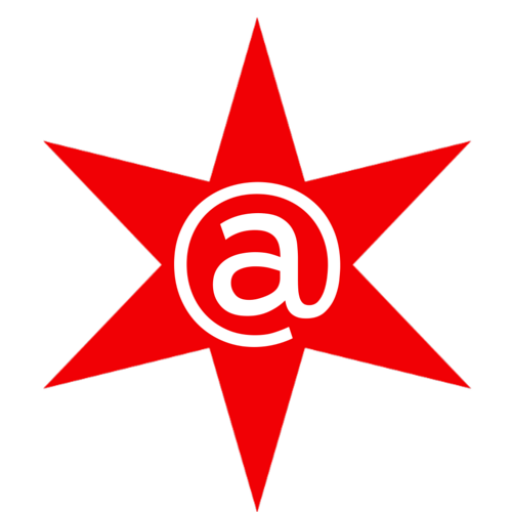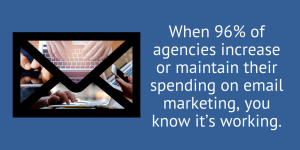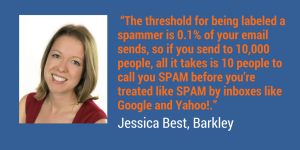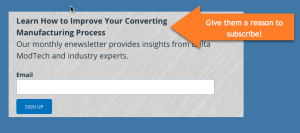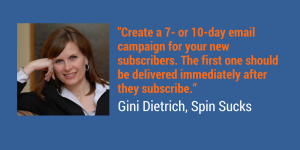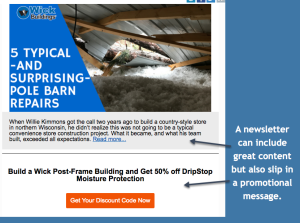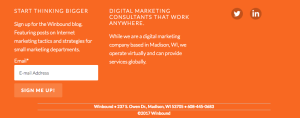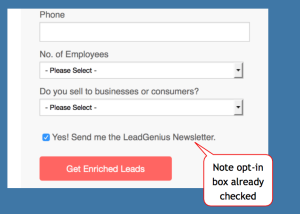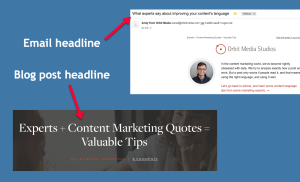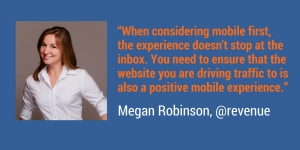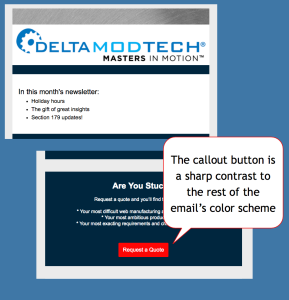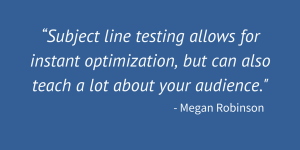What to Ask Before You Book: A Fast and Awesome Guide to Hiring the Right Speaker
What to Ask Before You Book: a Fast and Awesome Guide to Hiring the Right Speaker
If you’re getting ready to start the sometimes daunting process of selecting a speaker for your stage, you're undoubtedly aware of the tidal wave of details that need to be addressed to get the right person for the job. If you don’t have experience in this field, you're more than likely enjoying the thrill of building anxiety as you throw yourself into the selection process. Not to fear, the @revenue team is here.
If you have a cool 50-100k, you can easily fix your eyes on a public figure and google yourself into a hot name for your upcoming event, but more often than not that will buy you a ‘basic’ sports star, reality TV show or celebrity personality. Just don’t call them basic to their face...they hate that. If you don’t have a budget that hits those marks, then you're reading the right blog. We can help you get some vision for what you need beyond the big bucks.
First, you need to understand what the purpose of this speaker is for your event. Is this person setting the emotional setting for your event? Do you want people on their feet? Laughing? Crying? Throwing cash in the air?!? Are you looking for an expert, an entertainer... or both?
Here's a fantastic checklist that will help you ask the questions that need to be asked to get the best speaker for your event.
How to Prep for Hiring a Speaker: What to know and what to ask before the big show
Fees & Expenses
- What fee does this speaker charge for the length and type of engagement that you're looking for?
- Does the speaker's fee match your budget?
- If not, are there other places that you can pull funds from? Can you give them advertising, a booth, additional exposure in any way that will assist them with their goals?
- Does the speaker require travel fees? If so, what are their requirements and who does the booking?
- Is a deposit needed to hold your date?
- Are there ANY other fees? Bureau? Per diem? Personal cabana boy?
- Can they fill more than one spot on your roster (and save you on the cost of another speaker’s travel)?
Experience & Expertise
- Is the speaker a professional speaker or an expert who speaks?
- Does the speaker have multiple formats? Keynote? Workshop? Interactive?
- Do they have a livelihood that depends on them doing what they are speaking about, or do they just train?
- Can they custom craft an event for you?
- Do they have any certifications or accreditations in their field? Have they won any awards?
- How do they typically prepare for a speaking gig?
- Do their speaker reels (videos) appear engaging? Entertaining? Exciting?
- What materials will they bring? Are they going to bring educational or supportive materials or only just their selling tools?
- Can they use ‘clean jokes’ or do they only get laughs when eyebrows are raised?
- Are they published? Do they have books, articles, youtube shows or the like?
Environment & Temperament
- How easy was the speaker, or their team, to connect with? Get answers from? Talk to?
- How will they make your organization look good?
- Do they seem to speak at the same level that your audience is at?
- Are they going to just be on stage, or are they going to engage with the folks at your event?
- Do they use the tech tools that are going to make it a fit for your audience?
- If they are going to sell from the stage, what does that look like and can they do it with class?
- Can they help you drive home your message from the stage? Do you want them to drive people to take the next step? Purchase a product or something else?
- Will they be easy to work with?
- When will they arrive at the event? Leave?
- Can they be flexible to last-minute changes?
- What impact will this speaker have on the audience once the chairs have been put away?
Well, there you have it. The exhaustive, every-question-answered speaker booking checklist. I hope this helps you on your journey. We are here to help you find your next (or first) ‘perfect’ speaker, and just for the record, we have already asked most of these questions for you!
Find out more at today- we are ready to help! Speakers@revenue.wp10.staging-site.io
Demystifying Marketing Myths
Demystifying Marketing Myths

In a world with “alternative facts” and the ability to make your own truth, there is a lot of miss-information out there. @revenue is here to shed light and truth on some of the most common marketing myths and why they just aren’t facts. These misconceptions are dangerous and can seriously impact your business.
Marketing Myth #1: My business is so incredibly unique, it is too complex for anyone outside of our firm to communicate.
Why it’s false: Look, no marketer will ever be able to know your business better than you, but do you know what they are experts at? Communicating with your audience. How you translate that expertise and unique offering to the masses to best connect and engage is critical for generating sales.
Marketing Myth #2: I received an email from someone who says he can get my site to page 1 on Google. For just $99!
Why it’s false: Really? Are you going to fall for that one? SEO takes time and is a long-term strategy. Don't fall for some cheap tricks that may work today, but will leave you burned in the long run.
Marketing Myth #2.5: My cousin is an insta-star.
This goes right next to “the millennial on the team will do social media.” Leaving your brand, reputation, and marketing strategy to someone that knows how to use a tool is not enough. They need to have a strategy, plan and know how to generate ROI, not “likes”, from their efforts.
Marketing Myth #3: It doesn't need any marketing, really. It sells itself.
Why it’s false: Nothing sells itself. Even Apple's greatest products require the right placement at the right time communicated by the right people to the right audience.
Marketing Myth #4: The client is always right.
Why it’s false: I get it, we are in the service industry, but really? How does this develop trust and good recommendations? If the client was always right, why are they asking for help? Because they tried something one way and it didn't work perhaps? So, let's stop putting them on high platforms as always right and work with them as partners.
Marketing Myth #5: I don't need marketing to target my offering. Anybody and everybody can use my services.
Why it’s false: Because if anybody and everybody actually showed up at your doorstep tomorrow, you couldn't possibly service them anyway.
Marketing Myth #6: Word of mouth and a website is enough -
Why it’s false: Delivering quality, targeted and convertible traffic to your website takes a strategy, a budget, execution and some time. Don't wait for the pipeline to inevitably dry up. You need to be proactive instead of waiting by your inbox for a lead to come in.
Marketing Myth #7: Facebook is the only valid way to get your message across to people anymore.
Why it’s false: HA! That’s like saying, “The only way to get protein is to eat a lot of eggs.” There are TONS of channels, groups, mediums and tools to get your message across. If you believe this, you might be a little narrow-minded. Let an experienced marketer show you some solutions.
We all know first hand how annoying it can be to get the same assumption and miss-information driving networking conversations and sales calls. For many experienced professionals, they never had the opportunity to learn about marketing, so they get bad information from the internet, sleazy marketers pumping out misinformation that they take as truth. If you have a question or assumption about marketing, contact @revenue to explain more.
The GIF is a Gift!
The GIF is a Gift!
First, I believe we need to address a very important issue. Deep breath because there will be a lot of emotions here. Do you pronounce if GIF or JIF?
Allow me to settle the battle for once and for all. It doesn’t stinking matter.
The Psych
Now that we have that out of the way let’s talk about this novel little addition is changing the face of business. As always, the first thing I get excited about is the psychology behind the form of communication. An easy piece to understand is the mere-exposure effect. This phenomenon explains that we have a preference for things that we are already familiar with. In our society, media is the most common denominator. I know, there are always going to be outliers. There is generally at least one in every crowd that wants to loudly tell you how they have never watched TV or that they keep themselves pure of the mind pollution of popular media (Uh….ok...cool. I’m gonna talk to this other 99.999 % of people). Most people have some common experience and when you can use that commonality to express a thought or emotion it has more resonance for the recipient.
Most of the time GIFs are used to communicate emotion. EMOTION, the cornerstone of communication! Take into account Albert Mehrabian’s 7-38-55 Rule of Personal Communication.
 If you are relying only on words to communicate your message you are leaving 93% of your ability to communicate on the table. We also know that people make decisions (about everything) based on emotion and back it up with logic, so if you are effectively communicating to and connecting with emotion, are you doing your level best to get the recipient engaged with your message?
If you are relying only on words to communicate your message you are leaving 93% of your ability to communicate on the table. We also know that people make decisions (about everything) based on emotion and back it up with logic, so if you are effectively communicating to and connecting with emotion, are you doing your level best to get the recipient engaged with your message?
The Culture
As a company that uses GIFs heavily in our communication, I reached out to some of our newest members. Here were some of their responses:
“Well, gosh. Who wouldn't want to be around some humor in a company culture? I think a little mechanism like a GIF goes a long way, more than people probably might give it credit for. It shows that you're among friends, or at least that we're all in this together. Without it, you might risk the communication feeling like a cold directive. There's SO much room for the tone of an email to be misinterpreted. Using humor within that communication makes you appear warmer, friendlier and more accessible. All good things that any company culture should want to have.” -Dan Gershenson
“Using a gif is like finding that perfect Hallmark card at the store. Couldn't have said it better myself. It just sends the perfect message, unlike texts. It adds inflection and there is usually no denying what the other person is trying to say. More often than not, it puts a smile on my face and lifts my mood." -Laura Wilson
“First, my lack of knowledge about pop-culture and trivia made me hesitant to follow, but after just my first few experiences, using GIFs takes a weight off my shoulders as a writer. I can lean more on my GIF selection to set the tone. I don't have to be funny - I can just find something funny instead.
To me, GIFs establish a shared emotional connection through pop culture. As humans, our brains connect differently with faces, naturally assimilating to other's perceived emotions. When we see someone happy, we feel happy. This is two-fold when we connect with another through shared experiences of favorite comedians or movie scenes. The art of GIF-giving is selecting one that your audience will 'get' and can easily connect with.” -Megan Robinson
Just last week we entered a NEW client intake meeting (not yet full clients) and they mentioned that they were so happy when I used a GIF in the email because they automatically knew that we were cool (read that as ‘we are like you’), we have a sense of joy and humor, and that we were going to be fun to work with. A tip of my hat the Mr. Sinatra dancing in the rain!
If your internal staff and your new clients appreciate it, how can you create a GIF-embracing culture of your own? Well, start with a few rules and tools.
- Use an email plug-in tool like https://giphy.com/ that will allow your team to add images on the fly. They simply need type in a search term like excited, happy, or raining and a small list of images will pop up for them to click on and add to the email, slack channel or the like.
- Encourage common sense! This is not a place for profanity or lewdness just like ANY OTHER part of your work.
- Know thy audience! If it is your initial conversation with someone and you don’t know if they have a sense of humor to speak of it’s probably not what you want to lead with. You need to have a few exchanges with someone before you will know if this is something that is a fit for them.
The Business Plan
According to Forbes ‘[Other] businesses have had success using GIFs in email marketing campaigns. A case study of Dell’s GIF-centric marketing campaign was done by MarketSherpa. They compared metrics of the GIF campaign with other quarterly campaign reports and found that Dell saw a 42% increase in their click rate and a 109% increase in revenue.’
To meet the demand, many of the tools you already use are adding GIF searches to their services. Facebook, Twitter, Mailchimp just to name a few have adopted the movement. Want to create one of your own?
Forbes even gives you a step-by-step so that you can show off a product or even a great part of a speech.
At the end of the day you have to decide if it is brand congruous for your internal team and your external communication, but for me and my house….we will GIF IT UP!
How We Inspire Clients To Tackle Sales In The Office And In The Field!
How We Inspire Clients to Tackle Sales in the Office and in the Field!

Sales cannot stop once the contract gets signed!
Your sales process is part of your brand, part of your culture and the lasting impression that people take from your business. At @revenue, we know that creating a powerful process that both your sales team and your internal team can follow will allow not only for more sales but greater customer service and increased value per client!
If your business is ready for powerful growth, it's time we talked. 312.720.1399 x1
I received an email from Google about GDPR. What do I do now?
I Received an Email from Google about GDPR. What Do I Do Now?

I received an email from Google about GDPR. What do I do now?
You may have recently received an email from your Google Analytics account notifying you that you need to adjust your data collection settings to comply with GDPR. Like many business owners, especially those in the US, you may have found this email a bit confusing.
What Is GDPR?
GDPR is the General Data Protection Regulation. GDPR was created by the European Union. Its the EU’s answer on a years-old legal question about how data is used and whether individuals own the data that they create by interacting with websites online.
The courts ruled that individuals are the owners of their data, not the corporations (or websites) that collect the data. Therefore, the data must be deleted on a regular basis.
How Does GDPR affect the way I collect and retain data?
Great question. The answer will differ from business to business. The answer is rooted on whether you have clients or visitors from the EU and how you use your collected data in the course of business. For an expert recommendation on how to handle GDPR, please contact our Digital Media Specialist Harry Semerjian at harry@revenue.wp10.staging-site.io. Don’t wait too long…Google has set a deadline of May 25th, 2018 to take action.
You can also contact us through the form below. Don't let your questions go unanswered!
Fix These Weak Spots in your Business Practices
Fix These Weak Spots in your Business Practices

Written By: Rebecca Berneck
We’ve noticed that most small businesses owners like yourself focus their attention on delivering their services and neglect the operations hoping things take care of themselves. Whether you’re a set-it-and-forget type or a diligent planner, the end of the year is a great time to look at your small business management practices and make certain nothing is falling through the cracks. In addition to reviewing your financial position, set aside some time to review two aspects of your business operations: bookkeeping and document management.
Bookkeeping
Bookkeeping can be tedious and confusing. While it appears straightforward, (money coming in is income; money going out is an expense) properly categorizing everything can require a solid background in bookkeeping. However, with good bookkeeping, you’ll be able to generate accurate financial reports. These reports help you clearly see things like where you’re making the most money and what expenses are the highest. You’ll also get a good sense of your cashflow position, arguably the lifeblood of any business.
If your bookkeeping is messy and you can’t generate clean financial statements, then you can’t effectively plan for the future. If you’re using Excel to track your business finances, it might be time to consider upgrading to QuickBooks. And, if you’re already on QuickBooks, review your chart of accounts and your products and services list, archiving ones you don’t use anymore and combining duplicates.
Document Management
All businesses generate invoices, payment reminder letters, sales brochures, emails, balance sheets, spreadsheets, and reports; all are necessary to running your business. Small business document management refers to how you create, share, organize and store these documents for your business. With effective document management, you’ll be more efficient with your time and more consistent with your client experience.
Clean out your filing cabinet and remove documents that you no longer need on hand. You can destroy unneeded documents and rotate files you need to keep to a long-term storage solution. Like your filing cabinet, it might be time to go through your hard drive or cloud storage solution, removing files you don’t need and archiving completed projects.
If all of your documents such as receipts, bills, invoices, proposals and estimates are all over the place or crammed in shoe boxes, it’s time to consider an online document management solution. Tools such as Dropbox and Hubdoc coupled with a document scanner help you manage, organize and archive your business documents.
Lastly, if you use templates for sales emails, proposals, estimates and invoices then review them now to make certain all of the information is current and consistent across documents. While it may seem trivial, a consistent look and feel across client facing documentation instills a sense of trust in you and your business.
Stay Inspired
Stay Inspired

This poem has always been close to my heart. When the gremlins of fear and failure begin to sneak in, it keeps me grounded and reminds me of why I am here. Tell us, what poem keeps you inspired?
"Our deepest fear is not that we are inadequate. Our deepest fear is that we are powerful beyond measure. It is our light, not our darkness, that most frightens us. Your playing small does not serve the world. There is nothing enlightened about shrinking so that other people won't feel insecure around you. We are all meant to shine as children do. It's not just in some of us; it is in everyone. And as we let our own lights shine, we unconsciously give other people permission to do the same. As we are liberated from our own fear, our presence automatically liberates others."
MARIANNE WILLIAMSON
author, lecturer
The 8 Characters that Kill a Sales Team
The 8 Character that Kill a Sales Team

As a business owner, chances are you are used to being the one that gets it done. You drive the sales, you travel the miles, you push harder than anyone in your company - and when payroll comes around, you are one that makes sure that the money is there. No one will be surprised to hear that you bring a bigger passion to the table than anyone else in your firm, but if you are the only true driver you are headed directly into years of frustration and even failure.
It’s a huge step when you a hire sales staff, after all, you are trusting someone to go out there with your baby and trust that they will do the right thing. Now, you are managing everything you were before, while onboarding new sales staff who need deep engagement with and education about your product and brand and managing their numbers, creating a sales culture, ensuring effective collaboration with marketing, and….now you are hiding under your desk. It’s ok….come out....you don’t have to carry this alone.

We see business owners go through a range of emotions when the pipeline needs to grow. See if you recognize any of these characters:
- The Imposter: You have been making this business happen through sheer force of will and sell well because you know every inch of your business, but that doesn’t mean that you see yourself as a salesperson or leader.
- The Overwhelmed: If there are 17 hats in your business, you are wearing at least 14 of them. Adding the large time commitment of hiring, onboarding, and managing a salesperson or team could only make the stack topple.
- The Aggressor: With consistently underperforming sales, you are losing your ability to maintain patience with your sales staff and you are constantly doing mental gymnastics going back and forth between firing the underperforming or just pushing them harder to get the results that you need. The sales staff becomes the pack of kids that are always in trouble, but there isn’t enough time to train or coach them out of it, and hostility is more and more a part of your interactions (or at least inner monologue)
- The Incredulous: I don’t need accountability, I don’t need hand-holding, training or coaching, why do they?
- The Blind: With no central tracking system I couldn’t see the sales pipeline if I wanted to, but I have no idea how to pick the right CRM or how to program it to get the information needed to make the proper assessments and plans. And IF I do get it going, how do I not only train the team but keep them engaged with it?!
- The Rivet Catcher: You know that there are opportunities everywhere, but with BIG sales, current clients, past clients, new markets and new trends you are constantly staring up and hoping to reach out and catch what is falling instead of being able to distribute a plan.
- The Transformer: You see your industry moving from transactional sales to relationship-based sales but with a team that has been pushing papers for years, do you wipe the sales staff out and start over or teach the old dogs new tricks?
- The Bootstrapper: If you had a few hundred grand to toss into a new sales program, you might not need to lean so hard on the sales staff anyway. You need to find a financially viable way to get the right people in the right roles to move the sales team forward and start producing results.
Find yourself nodding (or shaking your head in commiseration) with some of the points above? Don’t beat yourself up, every business experiences this growing pain. But, don’t wait for the answer to come find you, reach out and learn about how our Fractional VP of Sales services can support you to create, empower and maintain a successful sales force and give you the keys to keep the sales machine running when you are ready for it.
Call us today at 312.720.1399
3 Reasons YOU Should be on Stage
3 Reasons YOU Should be on Stage
There you are, sitting in yet another conference listening to a speaker review something that you have heard 100 times before and all you can think is, ‘Good GRIEF!’ (I assume you watched the Peanuts as a child, too), ‘I have so much more powerful information to share, things that would actually give this audience some REAL value!’ Well...let me give you 3 reasons why you should get yourself together and get on the next stage.
**Please do NOT remove the current speaker from stage - let’s find you one of your own!**
- The more you have a microphone in your hand the more of an expert you are.
Listen, the raw truth is that no one is going to call you an expert until you say it first. There is no ‘authority fairy’ that is just waiting for you to reach a magical point of experience, education or innovation to give you your set of wings. You have to take the leap.
On a physiological level, the simple appearance of being on stage (in front of a room speaking with authority) creates a subconscious understanding that you have information to give and that you are an authority. The more often you are seen on a screen, stage or in print the more people know and begin trust you. As you start that relationship, with 10 or 2,000 people at a time, you have an opportunity to connect with them much more quickly and deeply when it is time for the next step.
- The Bloom Effect
In this content-heavy world, we are all looking for opportunities to create effective blogs, articles, videos, newsletters, and on and on. With one speaking engagement, you can use that single event to spread your marketing message wide.
- Post on your site
- Write your speech and a blog at the same time
- Video your speech and create 5-7 short burst videos
- Spread through your social media
- Engage with other organization’s social media, website, event programs
- Cross promote with other speakers at the event
- Etc.
- Be the Change
If you are not in business to change the world and make it a better place, this is not for you. For those of you that have the vision, that truly believe that what you do has a major impact on your client’s lives, you need to plant the seed. Our organization is focused on changing the lives of SMBs through providing them with the profit they need to care for their families, invest in their communities and create abundance for others. If that is truly what we are here to do and we keep it under wraps, we have failed tremendously.
This is why we take stages with a message of professional love. We tell the stories that give people a reason to care. We create empathy, provide tools to foster change and lift others up around us. If you were to apply those ideas to your business and look at your impact through a community if not worldwide filter, what would your keynote speech be?
Not sure where to start? Let’s find some time to chat...who knows, the next ‘chat’ you have might be on stage!
marie@revenue.wp10.staging-site.io
How to Do Email Marketing Effectively When You’re a Small Marketing Department
How to Do Email Marketing Effectively When You're a Small Marketing Department

If you want to learn how to do email marketing effectively, then understand there is no one thing that will ensure success. It’s a balance of strategy, techniques and execution. Here is an overview specifically designed for 1- to 3-person marketing departments.
Email is such an ubiquitous part of our lives that it’s often overlooked by marketers. There are bigger, shinier strategies and tactics that always seem to command the lion’s share of attention.
But email marketing should be an integral part of your approach — the numbers say it’s the most important. Let’s shed some light on why email is so critical, and the steps a small marketing department can take to make your approach effective.
For this post, I received some great insights from folks who really know their email marketing (listed in order of appearance):
Jessica Best, Director of Data-Driven Marketing, Barkley
Gini Dietrich, Founder and author of Spin Sucks
Megan Robinson, VP Marketing of @revenue
How effective is email marketing?
Throughout this post, we’re going to use the word “effective.” That’s because “effective” is defined as “successful at producing a desired or intended result.” And that’s what this stuff called marketing is all about — results, right?
Consider some of the industry statistics that reveal how widespread email usage is, and how effective email marketing can be:
- According to Statista, a total of 96% of agencies were going to either increase (48%) or maintain (48%) their spending on email in 2017.
- The number of email users worldwide is expected to rise to 2.9 billion users by 2019, according to Statisa. (In comparison, there are 2 billion Facebook users as of Q3 2017.)
What do the numbers tell me? When 96% of agencies increase or maintain their spending on email marketing, you know it’s working. And when a medium is 2.9 times bigger than Facebook, that tells you that it is still the biggest game in town.
Effective strategies, tips and techniques for email marketing
In creating a post about how to do email marketing effectively, you can’t possibly include everything. What we’ve attempted to do in this post is focus on the critical elements a small marketing department should focus on; you can build on this to refine your approach.
1. Don’t buy a list — EVER
Let’s cross off the first thing that comes to many marketers’ minds: Should I buy a list of email addresses and email them?
According to Jessica Best, the answer is quite simple: NO. Besides this being ridiculously intrusive for the end user, you also run a big risk of being labeled a spammer by email service providers, which means you could be blacklisted and your emails will go NOWHERE.
(Read more from Jessica in What Email Marketers (Still) Don’t Know They Don’t Know.)
If you really want to build a list, provide content and information that is of value to the customer. Share with them how you’ll solve their problems. People want answers, not SPAM.
2. Don’t just say “subscribe” or “get updates”
How many websites have you seen that ask for your email for “updates,” but don’t tell you what you’ll get in return?
Be sure you give them a solid reason to sign up, especially telling them the frequency of the emails. People like to get their Sunday morning paper on Sunday, after all. (I’m referring to newspapers – do people get newspapers anymore?)
3. If you automate, use “value forward” content to aid in the buying decision and stay in front of prospects
If someone signed up for an email, it’s likely that they are in the early stages of the buying process. You can use automation to set up a string of emails that will go out right after someone signs up for a download.
However, these emails need to be “value forward,” as Jessica Best puts it. Sure you can sell product, but think about your customer and their buying process. What would add value to their decision? Knowing more about you? Seeing customer reviews, or comparisons to your competition?
Any types of follow-ups should lead them through their Customer Journey, ultimately to a purchase. But you have to present something of value each step of the way.
You also can’t wait to follow up, as Gini Dietrich tells us:
A good majority of organizations have an email sign-up on their site without a single email that follows. Sure, you may send a monthly email, but what if that’s 29 days from now? Will the person remember who you are 29 days from now? It’s doubtful. Create a 7- or 10-day email campaign for your new subscribers. The first one should be delivered immediately after they subscribe.
4. Segment your list and personalize your messages
Different offers on your website can mean different things. Create different email lists based on the reason why people signed up. Do they just want to read your new blog posts? Are they interested in buying your product or service?
If you have different segments, you can tailor your emails to those segments. For a small marketing department, this is the first step toward speaking directly to what your target needs.
Segmentation is different than personalization, as noted in this great post by Jason Grunberg, who explains the difference between personalization and segmentation.
True personalization, beyond just inserting a contact’s name, involves delivering email content based on a client’s past actions, as explained by Active Campaign’s Brian Gadu in this post. Ultimately, this improves your deliverability and your standing in the eyes of email providers.
Grunberg and Gadu both indicate that personalized emails (one version for one person) are going to overtake grouped segmented emails.
For a small marketing department, this granularity should be the ultimate goal, but it won’t happen overnight. Start by segmenting your list, then work toward personalization.
(Check out more examples in Jessica’s post on 6 Steps to Putting Data to Work in Email Marketing.)
5. Let unsubscribe rates dictate how much you should send
A common question among marketers: How much email is too much? We’re all inundated with email, and you want to be sure your email gets opened and that you’re not annoying.
Whatever you do, don’t make your decision based on what YOU think is too much. Let your prospects make the decision.
You can do this by focusing on your unsubscribe rate. You want your unsubscribe rates to be below 1% of your list. If your rates creep north of that number, it’s time to reevaluate your content and the rate at which you’re emailing.
6. Use your blog content to make an eNewsletter
Creating a monthly eNewsletter can produce numerous benefits. As Megan Robinson of @revenue details in this post (with stats to back up her point), those benefits include:
- Keeps your business top of mind
- Engages your audience
- Deepens your relationship with customers
But sending out regular emails — at the very least, once a month — can seem tedious if you’re trying to create new content all the time.
One method that’s effective is to turn off the auto notification from your blog, and instead route sign-ups to a special list on your email service. Then, once a month, compile your blog posts into a newsletter and send it to prospects.
It’s a great way to share content for prospects just entering the sales funnel, or add in some new product promos to keep them posted on new sales.
7. Deliver your downloadable offer via email
Let’s say you’re providing a piece of content for a visitor to download, like a PDF guide. Should you make that available on a thank you page, after the person signs up for the offer?
Jessica recommends sending it out via your follow-up email. The recipient is very likely to open and engage with your email, and that helps Google recognize that the recipient wants your content. They’ll more likely “green light” your future emails, so always deliver your offers by email!
8. Build your list using different techniques
There are a million ways to build your list, but here are a few that have proven effective for us:
Feature a downloadable offer with a sign-up form as well: Many will argue that all your content should be ungated, but Jessica believes that you still should have lead forms in front of a valuable piece. “As long as it’s valuable, it doesn’t cost that person a whole lot to give up their email in exchange for the content,” she said.
Co-Op/Ad Swap: Partner with a relevant/complementary business or product. Create an email for a partner or complementary business. They will mail your message to their email list, then you respond in-kind.
These are just foundational suggestions. To really drive email sign-ups, check out this amazing post from Robbie Richards.
9. Feature an email sign-up in your website’s footer
We get a surprising amount of sign-ups with our email subscriber box in the footer, and it’s pretty logical when you think about it. A person reads the page, likes the content, and when they scroll to the bottom, BLAM, you’ve got the sign-up form.
Because it’s in the footer, you also have an automatic guarantee it’s on every page of your site.
10. Include an opt-in checkbox on your contact form
Besides the sign-up forms on your site, you can also add an opt-in checkbox to your contact forms. You may think these people want info. right away, but this gives you a method to follow up with them and keep them on the list. It also puts them in control of whether or not they want to receive more information.
(Opt-in form courtesy of Pinpointe.com.)
11. Control when notifications are sent out about a new blog post
When your developer sets up your blog subscription form, don’t use a plug-in from the content management system. Keep all of your subscribers in your email marketing platform so you can control when and how they see your latest.
Auto-notification plug-ins just grab the headline of your post and make it the headline of the article. But your article headline might not make for a good email headline, and you may also want to include a teaser message to your readers to get them to check it out.
Andy Crestodina does a great job with this. Notice his email has a headline written specifically for email. His blog post title, which likely includes very specific keywords and structure, probably would not be as effective.
12. Avoid getting labeled a SPAMMER
It’s very easy for someone to label you a SPAMMER, and as we touched on earlier, that’s someplace you definitely don’t want to go.
So how do you do it? First of all, play nice. Use common sense tactics not to SPAM. If someone gives you a business card at a lunch, that’s not an automatic OK to add them to your eNewsletter list. Send them the link to subscribe, and let them take it from there.
Some other tactics include:
Always include an unsubscribe link and a physical mailing address with your emails. Most email services will build this into your template, in compliance with CAN-SPAM law.
Be sure you’re sending from a professional SMTP server. Any email marketing platform like Active Campaign, MailChimp, Constant Contact will be compliant.
Easy on the images: Include enough text that a spam filter can “read” what your email is about. Too many images can get a can of SPAM thrown at you.
Avoid the SPAMMY words: Using these words in moderation won’t get you labeled a spammer, but too many can land you in trouble. Here’s a great list from Karen Rubin of HubSpot.
13. Ensure it’s mobile-friendly
Litmus’ Email Analytics tracks open emails from over 1.4 billion sent emails. They reported that emails opened on mobile devices was 56% of all emails sent. Make sure your emails, and the service you’re sending them from, are mobile-friendly!
Check out Megan’s article on Google’s Mobile First Initiative:
14. Create a great email – include excellent content
Oh yeah! That stuff. What you want to, you know, say to people. I guess that matters too, right?
Back in the days of direct mail, there was a 40-40-20 rule. Your success was determined by: 40% by the list; 40% by the offer; and 20% by the creative. Here’s a great post by Eunice Brownlee that refines that formula for email marketing today, but essentially the idea remains the same.
So what makes for an effective email?
Focus on the subject line: If you want people to get into your email, you need to open that front door. So create an excellent subject line. Check out insights from Charlie Meyerson on how to do it right!
Keep it short and focused: You want a clear intent with your email, and you want someone to take an action as a result of it. Keep your content skimmable; 1-3 lines of copy, and avoid the bulky paragraphs.
These shorter segments can then link out to longer content.
“One of the biggest mistakes people make with email is sending all of the content in the email. Don’t do that! It doesn’t encourage engagement, nor can you track effectiveness,” says Gini Dietrich.
“And always remember: Your email content is about THEM, not you. No one cares about your new hires, your new contracts, or your awards. What they do care about is how you can help them.”
15. Make Call-To-Action prominent
You want to take them somewhere, give them a big, bold CTA. And use a contrasting color, so it really stands out.
16. Metrics: How do you measure email marketing success
Here are the big ones we really keep an eye on:
Click-through rates: Really, at the end of the day, it’s all about sales, right? So you’d ultimately want to see how many people are clicking through to your site. Open rates are great and could potentially generate some brand equity, but you want people to get to your site.
If you can track the email traffic all the way to a conversion in the form of a lead or purchase, that’s the ultimate goal!
Unsubscribe rates: You definitely don’t want that number to incline. It’s a good indication you’re either sending out too frequently, or your content quality is off. According to Jessica Best, the average unsubscribe rate is .5%, and just make sure you don’t creep north of 1%.
Track through UTM tagging: This isn’t a metric, but a methodology to track your email visits from Google analytics. If you don’t use UTM tagging on your links, then GA will count the visit as “Direct” and not an email.
17. Test, test and test some more
Hate to date myself (someone’s got to), but when I was writing direct mail copy for a big insurance company, we would roll out $10,000 tests on a changed headline. That’s still done today, but with email, you can make instant changes and improve your open rate.
Megan Robinson digs deeper into the subject for us:
Most email service providers have subject line testing already built in and can be one of the best ways to immediately improve your email. A/B Testing is when you send a percentage of your audience 2 different subject lines. After a predetermined time (~4 hours) the subject line that received the highest open rate within the test group will be sent automatically to the remaining audience.
Subject line testing allows for instant optimization, but can also teach a lot about your audience. Try testing with a specific hypothesis in mind. Does your audience like it when you use emojis? Are they more offer- or relationship-focused?”
Email marketing is a journey
Like everything in this digital marketing game, your success rate will be a function of time. No one expects you to hit it right out of the park, right from the start.
Use these foundations as your launchpad, then tap into the experts in this article to learn more and improve your efforts. Effective emails are all about results — follow these tips, techniques and strategies and you’ll be on your way.
For the original blog, click here.
